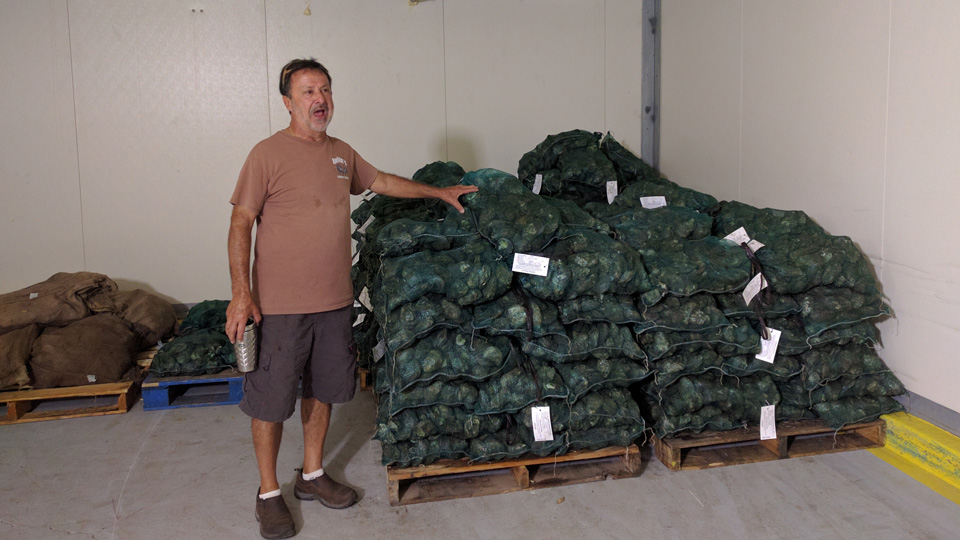
YSCLOSKEY, La. – The BP oil spill happened back in 2010. It blackened the Louisiana bayou, destroying livelihoods, poisoning sea life, and creating another ordeal for a state that was still recovering from Hurricane Katrina. A casual glance at New Orleans suggests that the effects of the spill are gone, but a visit to nearby St. Bernard Parish paints a very different picture. Here in this close-knit, hard-working community, the aftermath of the spill is still causing damage, and the seafood industry is hurting.
For Brad Robin, a lifelong resident and oyster farmer, ‘hurting’ is putting it mildly. “Imagine that everything you invested in all your life is lost. You feel devastated.” That, he said, is essentially what’s happened to an area that once thrived with oysters. “We used to sell oysters by the sacks. Now we sell mini-sacks. We even sell them by the piece. When the oil spill happened, oyster farming got shut totally down. We went from catching around 3,500 a week to nothing; zero.” Now, he and his crews and captains have started harvesting oysters again, but finding them might as well be compared to looking for a needle in a haystack.
Oyster farming suffers today not only because of the spill. The oyster beds were also ravaged by the effects of a dispersant, used to ‘clean up’ the oil. What that chemical actually did, say the local fishermen, was spread the oil out over a greater distance. The chemical did succeed in doing one thing, however: destroying an entire way of life almost to the point of no return. But oyster farmers like Robin are coming back, little by little, day by day. Robin described his profession as a family business, one where he and others always band together and manage to get by.
“We’re not only farmers and trappers,” said Robin. “Our grandfathers were carpenters and boat builders. When Katrina hit, we even started building houses.” He laid a hand upon a table built from scratch, right there in his office. Above him hung a light fashioned from a boat wheel. Around him, cabinets and drawers had knobs made from real oyster shells. Oyster farming was embedded not only in the hearts and minds of these people, but also in the architecture. “My family’s been here for over 100 years. I know this area like the back of my hand.”
And yet, when the oil spill occurred, BP never bothered to consult the very people who were most affected by this disaster. “They hired outsiders to help find affected areas, and they completely ignored us,” said Robin. “And you know what? One day a bunch of them went out to find one of those sites, and they got lost. Local fishermen eventually found them. That’s what happens when you’ve got people working for you who don’t have the faintest idea about oyster farming, the area, or our culture.” As he told the People’s World once before, he explained, “We are farmers of the sea. Our tractors are our boats, the water is our plot of land.
“But you know, you need seeds to start a new plot of land, and with that stuff BP sprayed, everything died. So if we couldn’t even get a few oysters, how could we restart our business? Oysters put out a milk – we call that the spat – and it travels in the water for about a month. We put out a material that would use that spat and get the oysters to stick to it. But with the oil contamination, we couldn’t get them to stick anymore. Now we have to spend a lot of money on new material” to fix that problem. “That spray they used is condemned in Europe. So why the hell are they using it here?”
He went on to reveal just how bad a shape the oyster farming situation is currently in: “We have seven areas that we work. Altogether that’s maybe three quarters of a million acres. Out of that, area number one has no life yet; two has maybe 20 percent of what it once produced; three is our best – it has 80 percent; we thought four was making a comeback, but then the oyster population collapsed; five has about 10 percent; six and seven – nothing.”
Speaking about BP’s false claims that the seafood industry is once more safe and doing well, he remarked, “If you’ve got seven areas, and only one of them is really heavily producing, you tell me: are we back to normal?”
He said it could take 10 years or longer to fully revitalize the water and the industry itself – if it happens at all. And other elements, like climate change and rising sea levels causing coastal erosion, could hamper those efforts. “As far as rebuilding that land goes,” he noted, “I don’t see it happening.”
While Robin, his family, and working people throughout the area face an uphill battle, they are by no means giving up. In fact, they’re finally starting to get some help. This is largely due to a new administration, run by Democratic Gov. John Bel Edwards, elected in November 2015 to replace Bobby Jindal, the right-wing former governor. “Edwards is getting people to listen to our opinions. Now the seafood industry is getting a voice. Before, they wanted to run over us. Now they want to listen to us.”
People like Robin are moving forward, but there are challenges ahead. A post-oil spill environment is a new and uncertain proving ground for restoring an aquaculture that was almost put out of existence, and oyster farmers are still coming to terms with it. “We know what to do when a hurricane hits,” said Robin. “With the oil spill, we’re still learning what the effects are.”
Photo: Oyster farmer Brad Robin remarked, “We used to sell oysters by the sack. Now we sometimes sell them by the piece.” | Blake Skylar/PW







